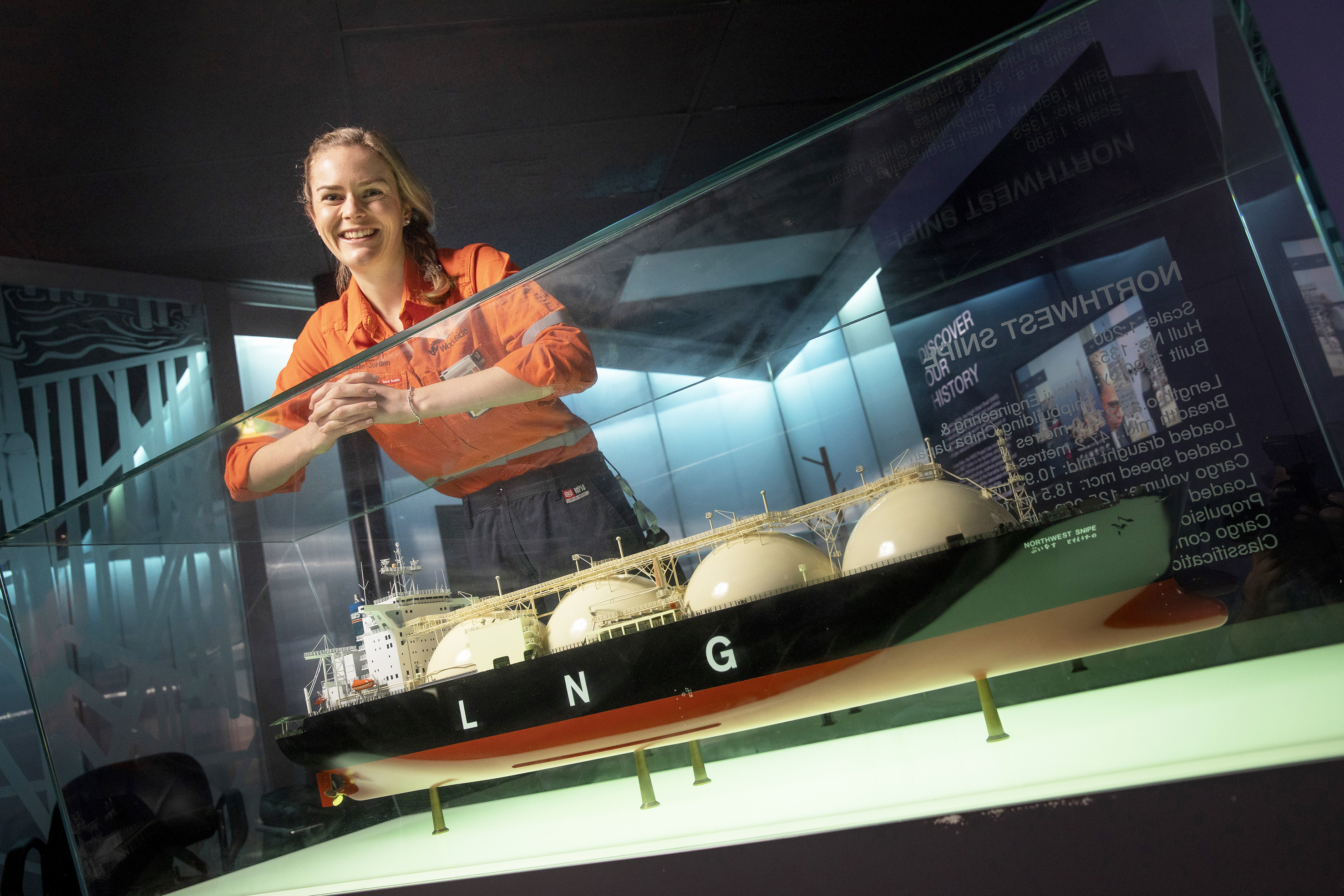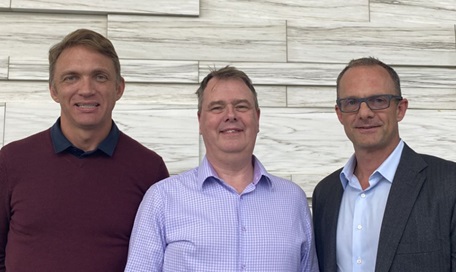Swell time
Adverse ocean conditions can delay the loading of LNG carriers, but Woodside has eased the impact – and cut emissions – by challenging the normal way of doing business.
The big swells of the ocean that periodically appear off Western Australia are few and far between – but when they do arrive, they can prove costly for our industry.

“Long period swells” occur when intervals between waves are around 20 seconds.
From Woodside’s perspective, one of the biggest impacts of long period swell is a delay in loading LNG carriers off Dampier, which results in having to proactively reduce LNG production to ensure we don’t run out of space to store LNG in the tanks.
Karratha Gas Plant (KGP) usually loads a vessel every 24-36 hours, but recently, when a long period swell event occurred (thanks to a storm off southern Africa and a low pressure system off the Great Australian Bight) it was impossible to load an LNG ship for a week, meaning LNG production had to be ramped back.
Now, Woodsiders have devised a way to reduce the costly impact of these delays by challenging the normal way of doing business.
“We’re trying to adapt to the new world we’re in and make savings wherever we can and that might involve turning off the turbines in the LNG trains more than we used to,” explains Ryan Taylor, LNG Lead Surveillance Engineering, KGP.
Turbines are needed in LNG trains to provide cooling to turn the gas into LNG. Across all five trains at Karratha Gas Plant (KGP), there are 19.
During the recent long period swell event, it was decided to turn off seven turbines on Trains 1 and 5.
Caitlin Jordan is an Optimisation Engineer at KGP.
“Caitlin calculated we wouldn’t need LNG from those two trains for four or five days at least because the long period swell meant we wouldn’t be bringing a ship in to load with LNG,” explains Ryan.
The MetOcean team gave good certainty as to how long the long swell period would continue.
Caitlin says: “It’s quite a bit of work to shut down a turbine and then restart them, and you have to carefully monitor temperatures inside the LNG train.
“But because it was a reasonably long window, we decided it was worth the effort.”
As well as reducing our fuel gas usage, switching off turbines reduces our CO2 emissions, too.
“More than 11,000 tonnes of CO2-e was saved by switching off these turbines,” says Caitlin.
And it also opens up the possibility of conducting maintenance by taking advantage of the temporary shutdown.
“Operations and maintenance did an outstanding job to remove reliability vulnerabilities by completing 17 opportunity shutdown scopes in Trains 1 and 5,” reports Ryan.
Operations Manager Sean Bruyns says: “It was great to see the level of collaboration across the organisation with people working together to deliver the safest possible outcomes, while minimising emissions and resolving a number of future vulnerabilities.
“This was another example of Woodside's people demonstrating excellence in the face of a difficult scenario.”
Offtake Coordination Manager Geoff Wake notes the recent long period swell event was the second largest on record.
“It inhibited our ability to safely conduct shipping over a sustained period,” Geoff notes.
“However, the proactive and collaborative nature of engagement across multiple disciplines ensured value was both created – by reducing C02-e – and protected – by removing vulnerabilities to maintain reliable operations.
“It is a fantastic result.”
Read the full Q3 2020 issue of Trunkline here.



